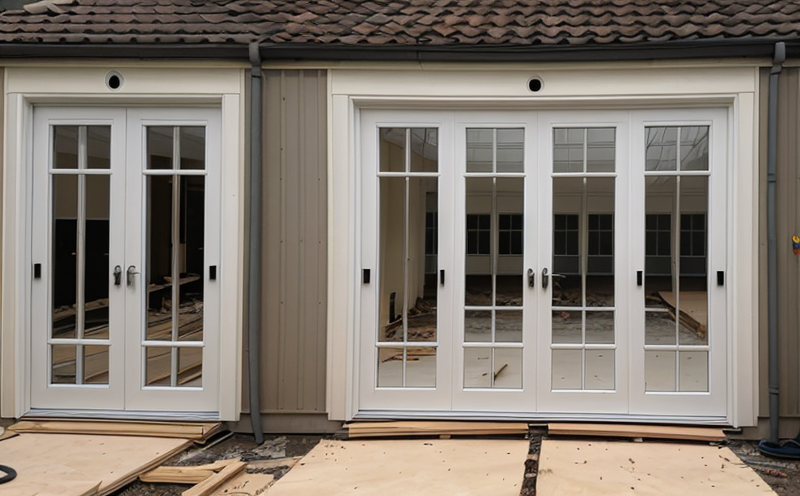ASTM E2074 Standard Test Method for Fire Tests of Door Assemblies
The ASTM E2074 standard test method is a critical protocol used to evaluate the fire performance of door assemblies, including their ability to resist heat transmission and prevent smoke and flames from spreading across an opening. This standardized procedure ensures that doors meet the necessary criteria for safety in various environments, such as commercial buildings, multi-family dwellings, hospitals, and other structures where occupants need protected escape routes.
ASTM E2074 is part of a broader suite of fire testing standards designed to provide consistent methods for evaluating building components. It complements ASTM E1385, which addresses the same subject but focuses on the use of door assemblies in smoke control systems. The primary application of ASTM E2074 lies in ensuring that doors can withstand intense heat and flames without compromising structural integrity or allowing hazardous materials to pass through.
The test procedure involves placing a representative sample of the door assembly into a specially constructed furnace chamber, which is then subjected to controlled exposure to fire. The duration of this exposure varies depending on specific requirements but typically lasts several hours. During testing, engineers monitor various parameters such as heat transfer rates, flame spread, and smoke generation.
This standard plays an essential role in ensuring that all stakeholders—developers, architects, builders, and occupants—are aware of the fire safety performance of door assemblies. Compliance with ASTM E2074 helps organizations avoid costly legal issues related to non-compliance and enhances overall public confidence in building products. Additionally, it supports regulatory requirements imposed by local authorities having jurisdiction (AHJs).
| Aspect | Description |
|---|---|
| Furnace Chamber Setup | The chamber is designed to simulate real-world fire conditions while maintaining precise control over temperature, flame height, and other factors affecting the door assembly. |
| Specimen Preparation | Door assemblies must be prepared according to ASTM E2074 guidelines. This includes cleaning, labeling, and positioning them correctly within the furnace chamber. |
| Testing Parameters | Engineers measure key performance indicators like heat flux through the door assembly, flame spread rate, and smoke density levels throughout the duration of testing. |
| Data Collection & Reporting | Comprehensive reports are generated based on collected data, detailing the fire resistance capabilities of each tested door assembly. |
Why It Matters
The importance of ASTM E2074 cannot be overstated, especially given recent high-profile fires that have highlighted the need for robust fire protection measures. By adhering to this standard, organizations demonstrate their commitment to protecting lives and property by ensuring that doors meet stringent performance requirements during emergencies.
- Enhanced Safety: Ensures that occupants have reliable escape routes in case of a fire.
- Regulatory Compliance: Helps organizations comply with local building codes and regulations regarding fire safety.
- Cost Savings: Prevents potential legal disputes arising from non-compliance with standards.
- Reputation Building: Demonstrates a proactive approach to quality control, enhancing brand reputation among clients and stakeholders.





